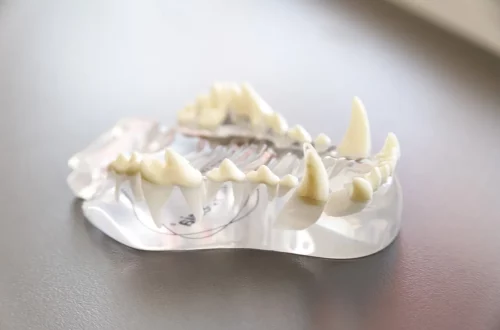
The Ultimate Guide to Keeping Coral in a Fish Tank
Creating a vibrant and thriving marine ecosystem in your home can be one of the most rewarding hobbies for aquarium enthusiasts. Among the various options available, coral reefs stand out for their breathtaking beauty and the intricate balance they represent. Keeping coral in a fish tank not only adds aesthetic appeal but also contributes to a dynamic environment that can host a variety of marine life. However, this endeavor requires careful planning, dedication, and a keen understanding of the unique needs of coral.
Coral is far more than just a decorative element; it is a living organism that plays a crucial role in the marine ecosystem. With various species of coral available, each with its specific requirements for light, water chemistry, and overall care, it is essential to equip yourself with the right knowledge before diving into this exciting venture. The intricate relationships between coral and their environment are fascinating and require a holistic approach to maintain a healthy and sustainable aquarium.
Whether you’re a seasoned aquarist or just starting, understanding the nuances of coral care can transform your fish tank into a stunning underwater paradise. From selecting the right type of coral to ensuring optimal water conditions, this guide will assist you in creating a thriving habitat that not only showcases the beauty of coral but also supports its health and longevity.
Choosing the Right Coral Species for Your Aquarium
Selecting the right coral species is one of the most crucial steps in setting up your tank. There are two main categories of coral: hard corals (Scleractinia) and soft corals (Alcyonacea). Hard corals are known for their calcium carbonate skeletons, which contribute to reef-building, while soft corals do not have these structures and are often more flexible and easier to care for.
When choosing coral, consider the lighting conditions in your aquarium. Most coral species require specific light levels, typically provided by LED or fluorescent fixtures. For example, species like Acropora thrive under high-intensity lighting, while others like Zoanthids can flourish in lower light conditions. Assessing the natural habitat of the coral species can help you mimic their requirements more effectively.
Additionally, consider the compatibility of different coral species with one another and with the fish and invertebrates in your tank. Some corals can be aggressive, using stinging tentacles to compete for space and resources, while others are more peaceful and can coexist harmoniously. Researching the behavior of each species is key to promoting a balanced ecosystem in your aquarium.
Water parameters are another critical factor in selecting coral species. Most corals prefer stable conditions, including specific ranges of temperature, pH, salinity, and nitrate levels. Conducting regular water tests can help ensure that your aquarium environment meets the needs of your chosen coral. Additionally, introducing corals gradually and monitoring their health will aid in avoiding stress and potential die-off.
In summary, the selection of coral species should be a well-informed decision based on light requirements, compatibility with other inhabitants, and water parameters. Taking the time to research and plan your coral choices will lead to a more successful and visually stunning aquarium.
Setting Up Your Aquarium for Coral Health
Creating an ideal environment for coral in a fish tank involves much more than just adding water and decorations. It requires careful consideration of the tank’s layout, filtration system, and overall maintenance routine. The setup process can significantly influence the health and growth of your coral.
First, the tank size plays an essential role in the success of your coral. Larger tanks generally provide more stable water conditions and allow for better acclimatization of coral. A tank of at least 30 gallons is often recommended for beginners, as it provides sufficient space for coral expansion and reduces the risk of rapid parameter fluctuations.
The filtration system is another vital component. Corals are sensitive to water quality, and a good filtration system helps maintain clean and stable conditions. Consider using a protein skimmer to remove organic waste and keep the water clear. Additionally, incorporating live rock into your setup can provide natural filtration and create a habitat for beneficial bacteria that aid in the nitrogen cycle.
Lighting is equally important, as corals rely on photosynthesis to thrive. High-quality LED lights can mimic natural sunlight and support coral growth. It’s crucial to position the lights at the correct height and intensity based on the specific needs of your coral species. Gradually acclimating your coral to new lighting conditions can help prevent shock.
Water flow is another critical aspect of an aquarium setup. Corals benefit from moderate water movement, which helps deliver nutrients and remove waste. Using powerheads or wavemakers can help create a gentle current throughout the tank, ensuring that all corals receive adequate flow without being overwhelmed.
Lastly, maintaining consistent water parameters is essential for coral health. Regular testing of salinity, pH, nitrate, and calcium levels will help you adjust conditions as needed. Establishing a routine for water changes can also contribute to a stable environment, promoting healthy growth and resilience in your corals.
In conclusion, setting up your aquarium for coral health involves careful planning and attention to detail. By focusing on tank size, filtration, lighting, water flow, and consistent maintenance, you can create an environment where your coral can thrive and flourish.
Understanding Coral Care and Maintenance
Once your aquarium is set up and coral has been introduced, ongoing care and maintenance become essential for long-term success. Corals are living organisms that require specific attention to thrive. Understanding their needs and maintaining optimal conditions is key to ensuring their health and growth.
Feeding is one of the most critical aspects of coral care. While many corals obtain nutrients through photosynthesis, they also benefit from supplemental feeding. Depending on the species, you may need to provide them with specific types of food, such as plankton, coral pellets, or liquid foods designed for reef tanks. Observing your corals and adapting your feeding routine based on their response will help promote robust growth.
Monitoring water quality is vital for coral health. Regular testing should include parameters like temperature, salinity, pH, alkalinity, and calcium levels. Corals can be quite sensitive to changes, and even minor fluctuations can impact their health. If you notice signs of stress, such as color loss or retraction, it’s essential to take immediate action to rectify any issues.
Maintaining stable water conditions also involves regular water changes. This practice not only helps remove accumulated waste but also replenishes essential minerals and trace elements that corals rely on. A general guideline is to perform a water change of 10-20% every two weeks, although this may vary based on your specific tank setup.
In addition to water changes, keeping the tank clean is vital. Algae can quickly become a problem in a reef tank, competing with corals for nutrients and light. Regularly removing excess algae and detritus will help maintain a healthy environment. Additionally, consider introducing herbivorous fish or invertebrates that can assist in controlling algae growth naturally.
Lastly, it’s essential to observe your corals regularly. Look for any signs of disease or stress, such as discoloration, tissue recession, or unusual behaviors. Early detection can make a significant difference in treatment and recovery. If you notice any concerning changes, researching potential solutions and consulting with experienced aquarists can provide valuable insights.
In summary, ongoing coral care involves feeding, monitoring water quality, performing regular maintenance, and being observant of your corals’ health. By dedicating time and attention to these aspects, you can ensure a thriving coral ecosystem in your aquarium.
Common Challenges in Coral Aquariums and How to Overcome Them
Keeping coral in a fish tank can be a rewarding experience, but it is not without its challenges. Many aquarists face common issues that can hinder the health and growth of their corals. Understanding these challenges and knowing how to address them can significantly improve your chances of success.
One of the most prevalent challenges is maintaining stable water parameters. Corals are sensitive to fluctuations in temperature, salinity, and pH. Even small changes can lead to stress and potential coral loss. To combat this, consider using a high-quality heater and a reliable thermometer to maintain consistent temperatures. Invest in a refractometer for accurate salinity readings, and use a reliable test kit to monitor pH levels regularly.
Another common issue is the presence of pests and diseases. Coral-eating pests, such as flatworms and nudibranchs, can pose a significant threat to coral health. Regularly inspecting your corals and tank for signs of pests is crucial. Quarantining new coral additions before introducing them to your main tank can help prevent infestations. If you do encounter pests, researching effective treatments and considering the use of natural predators can help manage the problem.
Algae overgrowth is also a frequent issue in coral aquariums. Excessive algae can compete with corals for light and nutrients, leading to poor health. To address algae problems, ensure you have adequate water flow, limit feeding, and maintain proper lighting. Additionally, consider introducing herbivorous fish or invertebrates that will help control algae growth naturally.
Coral bleaching is another concern that aquarists may face. This occurs when corals expel the symbiotic zooxanthellae algae that live within their tissues, often due to stress from poor water quality, light changes, or temperature fluctuations. If you notice signs of bleaching, take immediate action to rectify the underlying issues, such as improving water quality or adjusting lighting intensity.
Lastly, patience is key in maintaining a coral aquarium. Growth rates vary significantly among coral species, and it may take time for corals to acclimate and thrive in their new environment. Avoid the temptation to make drastic changes all at once, as this can lead to further stress.
In conclusion, common challenges in coral aquariums can be effectively managed with careful monitoring, proactive maintenance, and a patient approach. By preparing for potential issues and responding promptly, you can enjoy the beauty and diversity of coral in your home aquarium.
Keeping coral in your fish tank can be a fulfilling hobby that adds life and color to your living space. However, it requires commitment, knowledge, and ongoing care to create a thriving marine environment. By understanding the needs of coral, setting up your aquarium wisely, and addressing common challenges, you can cultivate a beautiful underwater ecosystem that brings joy for years to come.




